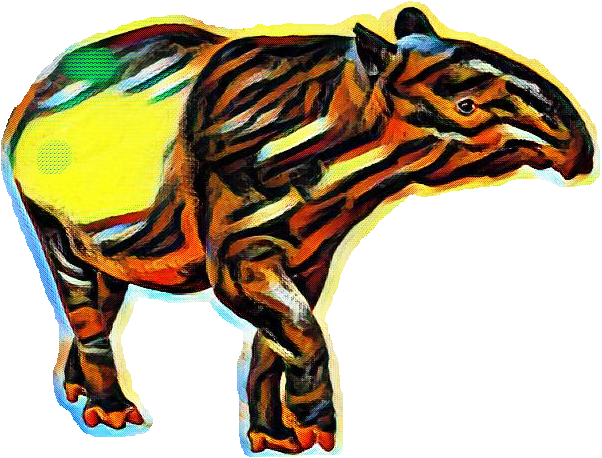One of the most bizarre, ridiculous and earliest perissodactyl groups known are the Eurasian endemics: the palaeotheres. This group of hippomorph (horse-like) perissodactyls were first identified in the early 1800s by George Cuvier, and named “old beast”, and include a variety of forms from the diminutive Plagiolophus minor to the horse-sized Palaeotherium magnum (see photo).  Palaeotheres are a very interesting group to study, as they are the closest phylogenetic group to modern horses within the Perissodactyla.
Palaeotheres are a very interesting group to study, as they are the closest phylogenetic group to modern horses within the Perissodactyla.
The variety in the size and proportions of palaeotheres has been well known since their initial descriptions by Cuvier, yet little has been done to quantify just how variable these taxa are. Moreover, Cuvier’s direct comparison of Palaeotherium species to tapirs triggered my interest, and enabled me to formulate a study into the comparative anatomy of the forelimbs in palaeotheres and tapirs.
In February 2018, my student (Paul Indekeu) and I were lucky enough to be able to study some of the original palaeothere material first described by George Cuvier. With our laser scanner and the welcome assistance of Dr. Guillaume Billet and his PhD student Christophe Mallet, we scanned over 100 bones in three rather wet days in the Muséum National d’Histoire Naturelle, Paris. We were even fortunate enough to see the gallery after the sun goes down and the lights come on! (see my photo below) The bones scanned in the MNHN of Paris have become the backbone of a comparative study on limb variation in palaeotheres, and how modern tapir locomotion may be analogous for the movement of these weird and wonderful Eocene perissodactyls.
The bones scanned in the MNHN of Paris have become the backbone of a comparative study on limb variation in palaeotheres, and how modern tapir locomotion may be analogous for the movement of these weird and wonderful Eocene perissodactyls.

